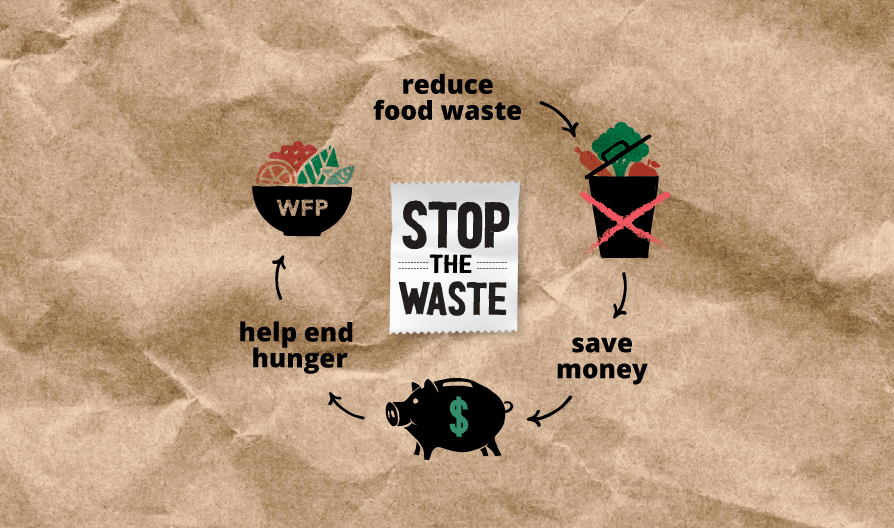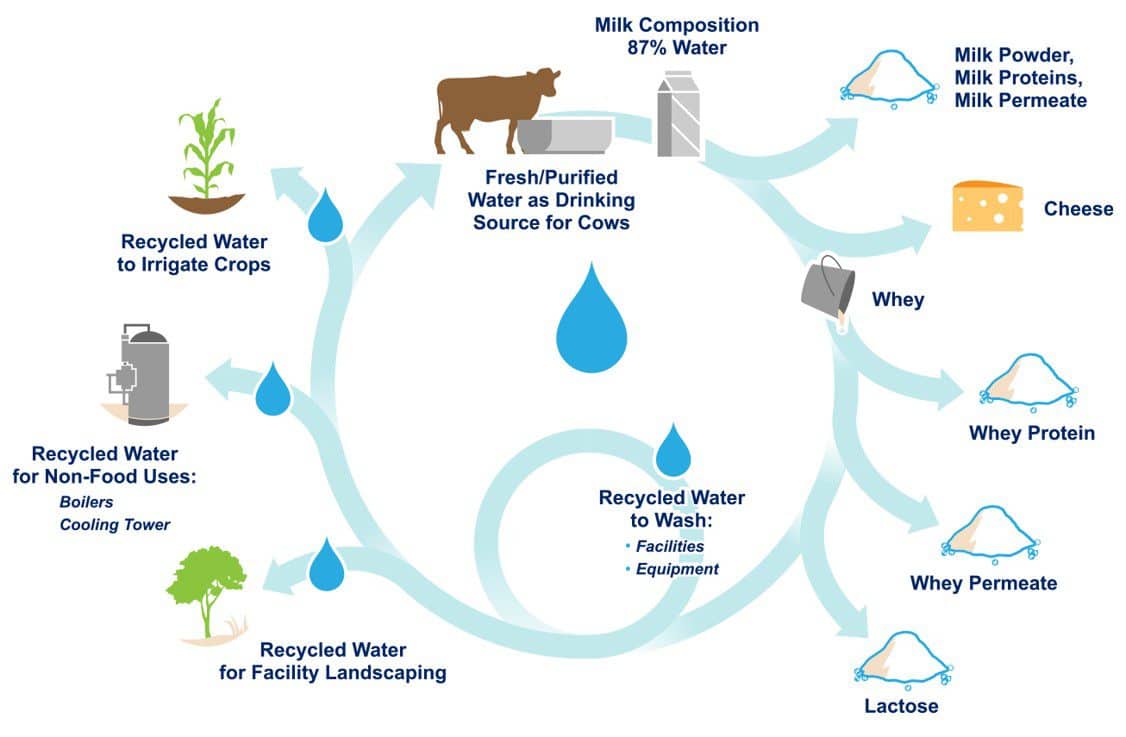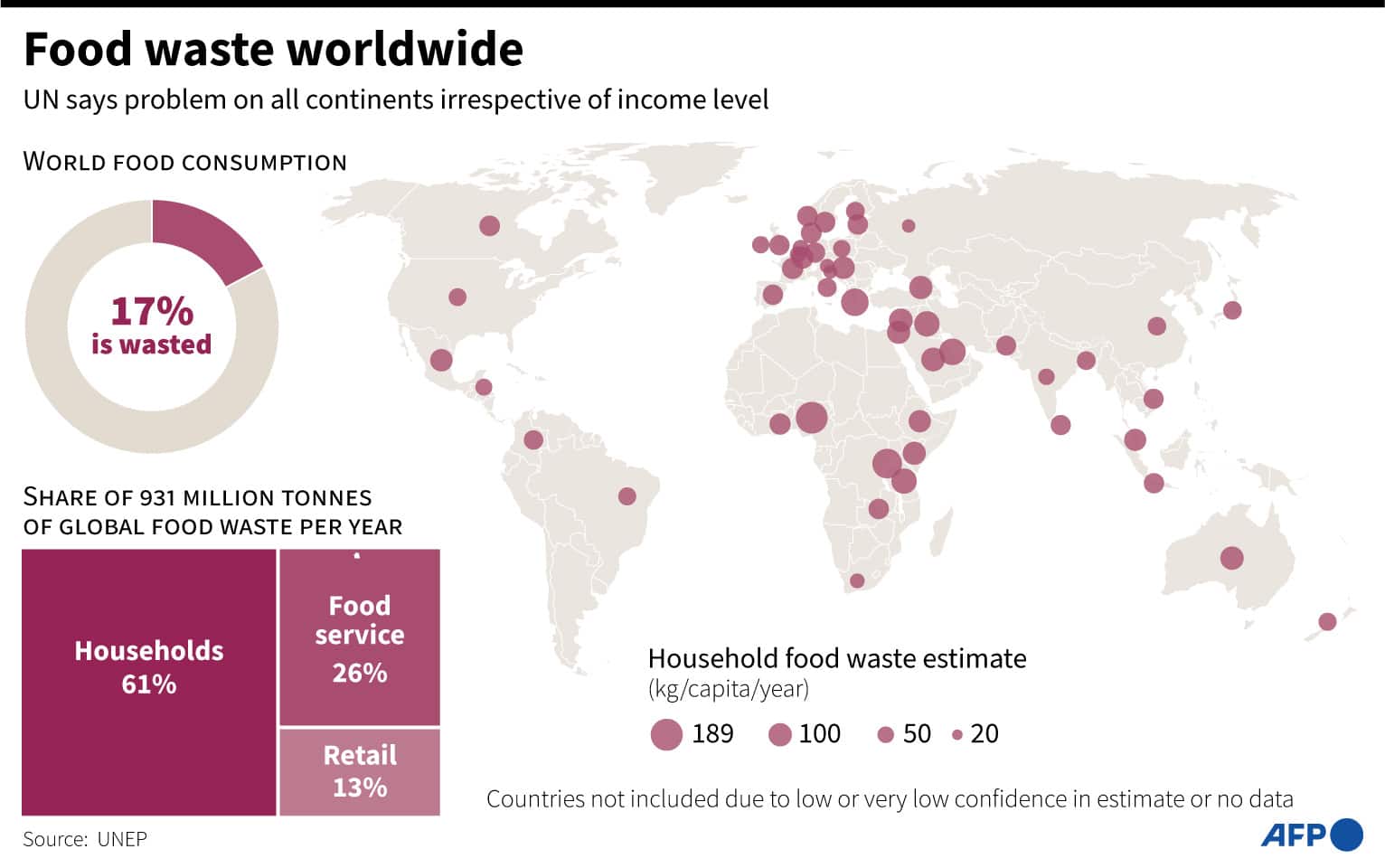If food wastage was a country, it would be the third largest source of greenhouse gas emissions!
Food waste burdens waste management systems, increases food insecurity, and plays a major role in global problems such as climate change, biodiversity loss, and pollution.
According to the United Nations, about 931 million tons of food are wasted annually, accounting for between 8 and 10 percent of global carbon emissions.
According to the United Nations Environment Program (UNEP) in 2021, about 17 percent of global food production may be wasted, with 61 percent of this waste coming from households, 26% of food services and 13% of retail stores are provided.
Therefore, reducing food waste at all levels – consumer and household – can have significant environmental, social and economic benefits. This ambition is enshrined in the United Nations Sustainable Development Goal (SDG) 12.3, which commits countries to halve global food waste per capita at the retail and consumer level by 2030.
The problem of food waste is worse than previously thought!
The Food Waste Index is the first of its kind to highlight the scale of the problem. However, the report found that per capita household food waste is similar in high-income, middle-income and middle-income countries. There was not enough information about low-income people.
In fact, it shows that Global food waste could be more than double the previous estimate. Previous studies have shown that the loss of food consumed exclusively in developed countries is a problem and the losses of production, storage and transportation are thought to be specific issues in developing countries.
Motivate the evolution of the food system
The Food and Agriculture Organization of the United Nations (FAO) estimates that 690 million people were hungry in 2019, a figure that is likely to increase after Quidditch.
As food insecurity affects many people around the world, it is estimated that food loss costs the global economy $ 936 billion annually.
Food systems as a whole have $ 12 trillion in health, economic and environmental costs to society, which is 20 percent more than the market value of food systems.
This report describes how to motivate changes in food systems, such as investment refocusing and public policies.
Redesigning business models, forcing investors to set higher standards for companies, and encouraging consumers to shift demand for more socially responsible products are some of the things that can be mentioned.

How to deal with the problem of food waste?
At the government level, the Food Waste Index encourages countries to use their approach to measuring food waste – at the household, food service and retail level – to guide national strategies for food waste prevention and track progress towards 2030 goals.
Food-related businesses, such as supermarkets, can do their part to reduce waste by maintaining product quality and safety and using the least amount of energy possible.
For example, technology Smart packaging It can be used to monitor the warehouse temperature and warehouse level of food producers, improve the control systems of product storage conditions during transportation and sale, as well as monitor the health status of food products in real-time, from the time of production to consumption.
But there are many things that can be done at the consumer or household level. The FAO suggested ways to waste less food, such as adopting a healthier diet, purchasing essentials, and wisely storing food.
The difference between “use to spoilage” and “best time to eat” is also helpful in understanding food labeling
“Use until spoiled” tells you how long food is safe to eat, while “best time to eat” indicates that food quality is best before that date, although it is still safe after that.
People are also encouraged to eat smaller portions and like leftovers. So whatever is left over can be frozen later or added as an ingredient in another meal.
Food waste can also be composted, returning nutrients to the soil and reducing your carbon footprint.
Buying local produce enables consumers to help fight pollution by reducing delivery times, while eating at least one non-meat meal a week can also reduce greenhouse gas emissions.

Out of every six cups of milk, one cup is thrown away every year!
According to research conducted by the University of Edinburgh for the Guardian (2018), one in six cups of milk produced worldwide is lost or wasted, and has a significant impact on food loss statistics.
According to Professor Peter Alexander, a member of the newly established Global Academy of Agriculture and Food Security, 16 percent of the world’s dairy products – 116 million tonnes – are disposed of or discarded annually. He estimated that retailers, distributors and consumers were responsible for half of this waste, disposing of about 60 million tonnes of dairy a year.
About 55 million tons are lost even before they reach the store – during production and distribution – due to corruption and waste on the farm or when milk is being distributed and exported abroad.
However, some analysts believe that dairy waste figures could reach 30 percent if more inefficiencies are taken into account, such as flooding of foreign markets, use of milk as animal feed and over-consumption.

Alexander said: “To achieve a more efficient system and reduce the environmental impact of food waste, we need to find ways to reduce all of these sources of waste.” In many developing countries, the percentage Missing milk from farm to warehouse, due to problems in storage and transportation of products, it is much more than economically developed countries.
For example, according to the Food and Agriculture Organization (FAO), 15 percent of Oman’s milk is lost on the farm, compared to 0 percent in Sweden.
In more developed countries, such as the United Kingdom, milk and dairy products are discarded at the retail and consumer level. Dairy is one-fifth of all food waste in the UK, according to Wrap, the UK government’s waste reduction agency.
However, according to the USDA, dairy production has been growing rapidly around the world, growing by 6% between 2014 and 2018. China, India, Canada, the Netherlands and Ireland saw the largest increases in production.



good day, distinguished blog on greasy loss. aforesaid helped.
Thank you very much for your comment.
Thanks for the article very interesting and helpful
Thank you very much for your comment.
good day, primary blog on unctuous loss. akin helped.